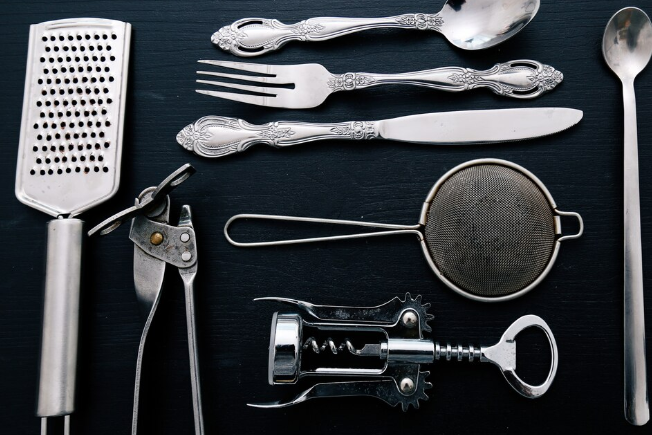The evolution of kitchen appliances has been a fascinating journey, transforming how we prepare, store, and consume food. Among the myriad of kitchen innovations, refrigeration equipment stands out as one of the most significant advancements. From iceboxes to smart refrigerators, the development of refrigeration technology has revolutionized the culinary world. This article explores the evolution of kitchen appliances with a focus on kitchen equipment, highlighting how these changes have impacted our daily lives.
1. Early Refrigeration Methods
Before the advent of modern refrigeration equipment, people relied on natural methods to preserve food. Here are some traditional methods used:
1.1. Icehouses and Iceboxes
In the 19th century, icehouses were used to store large blocks of ice harvested during winter. These ice blocks were then used in iceboxes, insulated wooden cabinets, to keep food cool. While effective, this method required a constant supply of ice and regular maintenance.
1.2. Root Cellars
Root cellars were underground storage areas that maintained a cool and stable temperature, making them ideal for preserving fruits, vegetables, and other perishable items. This method leveraged the natural insulation of the earth to keep food fresh for extended periods.
2. The Advent of Electric Refrigeration
The early 20th century saw the introduction of electric refrigerators, marking a significant leap in refrigeration technology. These appliances quickly gained popularity due to their convenience and efficiency.
2.1. The First Electric Refrigerators
The first electric refrigerators, developed in the 1910s and 1920s, used refrigerants like ammonia and sulfur dioxide. These early models were bulky and expensive, but they laid the groundwork for future advancements in refrigeration equipment.
2.2. Introduction of Freon
In the 1930s, the introduction of Freon (a chlorofluorocarbon refrigerant) revolutionized refrigeration. Freon was non-toxic, non-flammable, and highly efficient, making refrigerators safer and more reliable. This development paved the way for widespread adoption of electric refrigerators in households.
3. Post-War Innovations
The period following World War II saw rapid advancements in refrigeration technology, driven by economic growth and increased consumer demand.
3.1. Frost-Free Refrigerators
In the 1950s, frost-free refrigerators were introduced, eliminating the need for manual defrosting. This innovation made refrigeration equipment more user-friendly and convenient, further increasing its popularity.
3.2. Side-by-Side and French Door Models
The 1960s and 1970s brought new designs, including side-by-side and French door models. These configurations provided more storage options and better organization, catering to the evolving needs of consumers.
4. The Digital Revolution
The late 20th century and early 21st century ushered in the digital revolution, transforming refrigeration equipment with advanced features and smart technology.
4.1. Digital Temperature Controls
Digital temperature controls allowed for more precise regulation of internal temperatures, improving food preservation. LED displays and touch panels made refrigerators easier to operate and customize.
4.2. Energy Efficiency
Advances in insulation and compressor technology led to more energy-efficient refrigerators. The introduction of Energy Star ratings helped consumers choose models that reduced energy consumption and lowered utility bills.
4.3. Smart Refrigerators
Smart refrigerators, equipped with Wi-Fi connectivity and integrated software, emerged in the 2010s. These appliances offer a range of features, including:
- Remote Monitoring and Control: Users can monitor and control their refrigerator settings via smartphone apps, ensuring optimal performance even when away from home.
- Inventory Management: Smart refrigerators can track the contents and expiration dates of food items, helping reduce waste and streamline grocery shopping.
- Voice Assistants and Displays: Integrated voice assistants and touchscreens provide recipes, weather updates, and entertainment, transforming the refrigerator into a central hub for the kitchen.
5. The Future of Refrigeration Equipment
As technology continues to advance, the future of refrigeration equipment looks promising, with potential developments in various areas:
5.1. Sustainable Refrigerants
Environmental concerns are driving the development of sustainable refrigerants with lower global warming potential (GWP). New refrigerants, such as hydrofluoroolefins (HFOs), offer improved efficiency and reduced environmental impact.
5.2. Enhanced Food Preservation
Future refrigerators may incorporate advanced preservation technologies, such as vacuum-sealing compartments and UV-C light sterilization, to extend the shelf life of food items further.
5.3. Integration with Smart Home Ecosystems
The integration of refrigeration equipment with broader smart home ecosystems will continue to grow. Seamless connectivity between kitchen appliances, voice assistants, and home automation systems will enhance convenience and efficiency.
5.4. Personalized User Experience
Refrigerators of the future will likely offer more personalized user experiences, leveraging artificial intelligence and machine learning to adapt to individual preferences and usage patterns.
6. Conclusion
The evolution of kitchen appliances, particularly refrigeration equipment, has transformed the way we store and preserve food. From traditional iceboxes to state-of-the-art smart refrigerators, each advancement has brought greater convenience, efficiency, and functionality to our kitchens. As technology continues to evolve, the future of refrigeration equipment promises even more innovative and sustainable solutions, ensuring that our kitchens remain at the forefront of culinary advancement.
